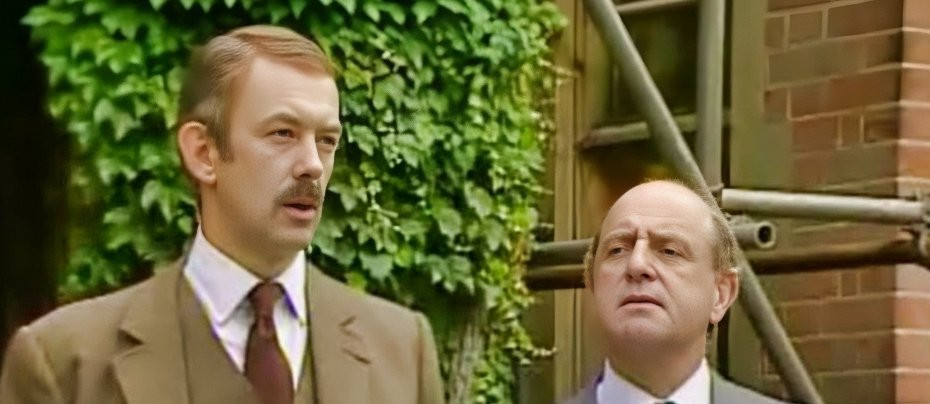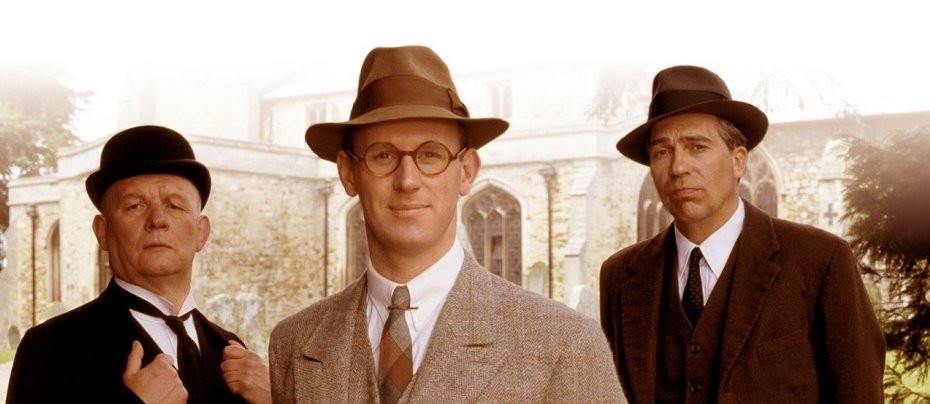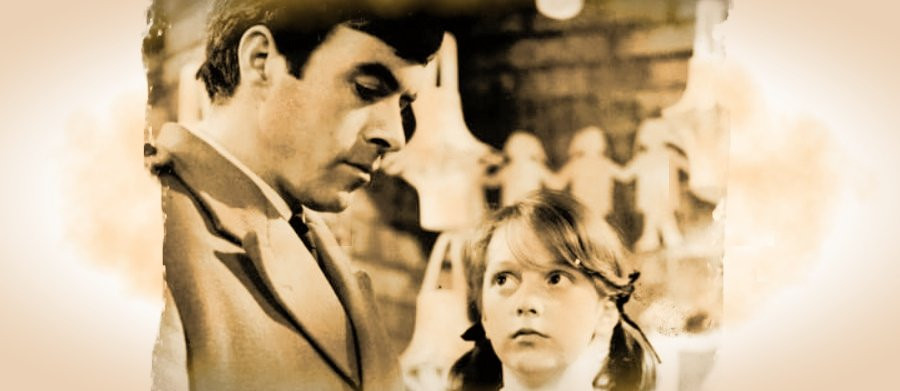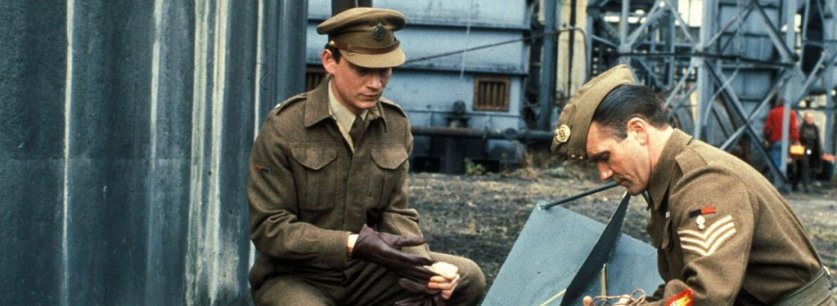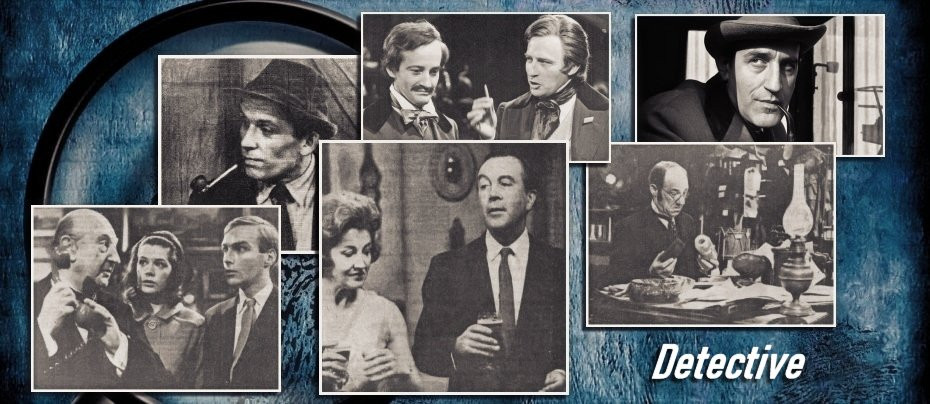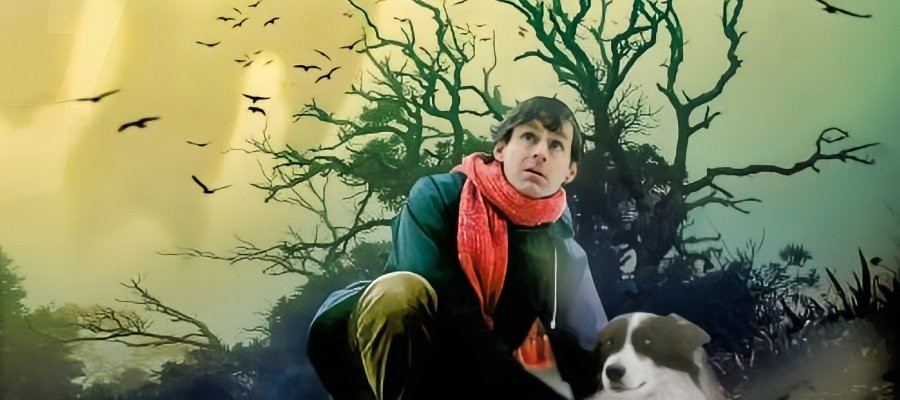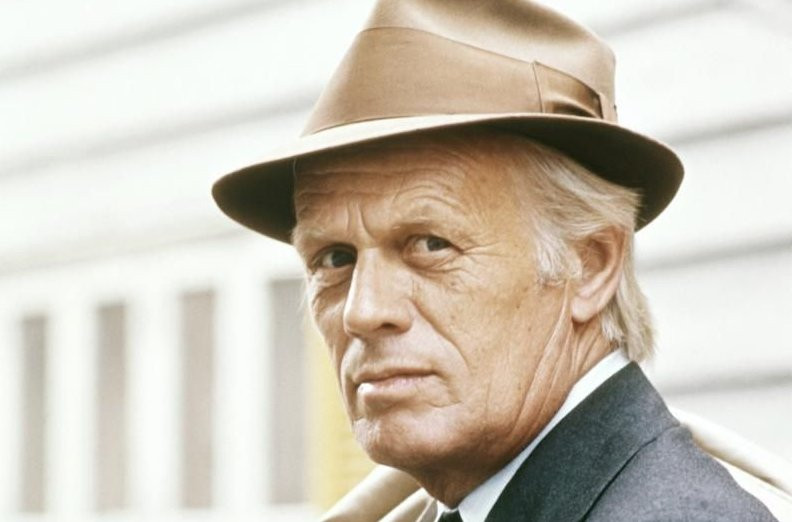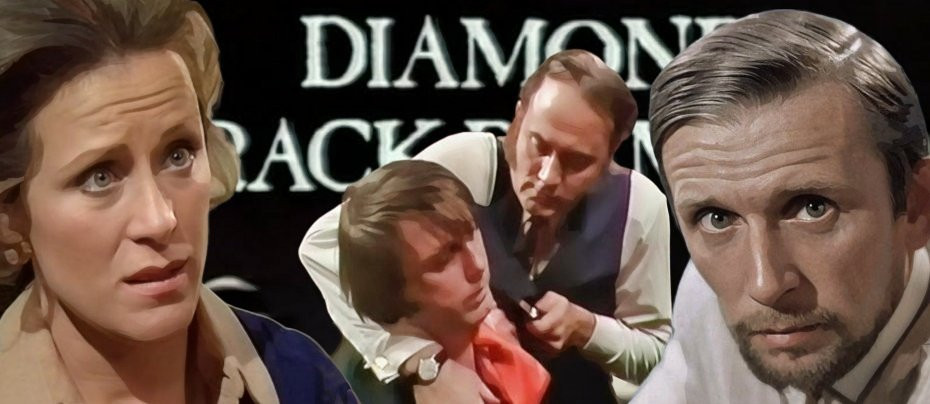
Diamond Crack Diamond
1970 - United KingdomReview: Laurence Marcus
Six-part thriller from London Weekend Television starring Alan Dobie (Cribb) as John Diamond, a Fleet Street reporter who has a reputation for living dangerously.
In the opening episode, Diamond has returned to England after escaping from an African jail where he was interned after he had set out to expose the corruption of big business, which was intent on exploiting the emergence of certain African countries. But the stakes prove higher than even he imagined as his totally ruthless adversaries are determined to keep him silent. Not knowing who he can trust, even those he considered to be long term friends, Diamond, the hunter of the truth, has now become the hunted, with danger dogging him at every twist and turn.
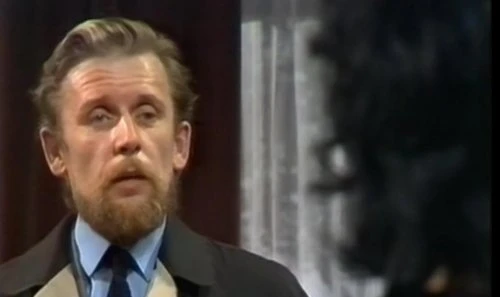
In the opening episode, Diamond visits his lawyer, Mark Terson, to discuss his growing fears that his phone is being tapped, his apartment has been searched, and he was recently attacked and warned off by a man whose car is now parked outside Terson’s office. Terson dismisses Diamond’s concerns, as the reporter has gained hero status for exposing a corrupt regime, and several publishers are eager to buy his account of his harrowing imprisonment and dramatic escape. However, Diamond is not interested in telling that story. Instead, he wants to write an exposé about the British businessmen who orchestrated the revolution for their own gain and are, in his view, responsible for the deaths of countless innocent men, women and children. Terson tries to dissuade him from publishing, but Diamond accuses the lawyer of being aligned with the powerful companies that want him silenced.
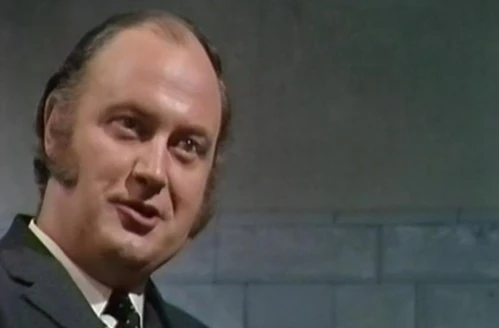
Diamond also faces personal turmoil, as his wife, Joyce, is filing for divorce on grounds of adultery and desertion. They meet when she unexpectedly shows up at the flat of his ‘girlfriend’, and despite their separation, it’s clear there’s still lingering affection between them, though reconciliation seems unlikely. As they leave the flat together, they narrowly escape an assassination attempt when a passing car fires a shotgun at Diamond.
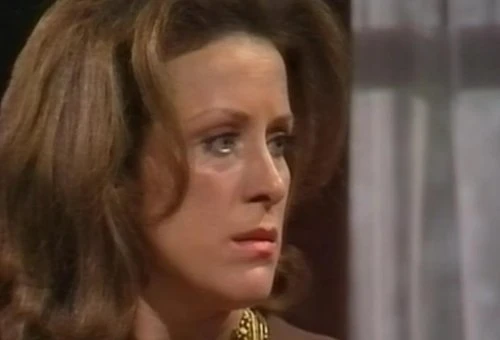
Mark Terson is played by Iain Cuthbertson, the tall and imposing Scottish actor who would become familiar to viewers as Charles Endell Esq. in the hit series Budgie. But in this series his native accent is completely absent, and he speaks in precise, clipped English tones. Joyce Diamond is played by Judy Parfitt, the actress who is familiar to modern audiences as the elder nun Sister Monica Joan in Call the Midwife.
The first episode is dialogue-heavy and light on action, primarily setting the stage for the series. The only moment of excitement is the attempted murder at the episode's climax. Critics were divided in their assessment of the series. Following the second episode the critic John Lawrence of The Stage wrote:
It is a pity that television has conditioned us to such an extent that the title Diamond Crack Diamond, and the advertising blurb in TV Times describing the ace reporter, his determination to fight the corruption and chicanery in a new...African state, and the efforts of Western Big Business to stop him from revealing too much, should conjure up a very specific image in most of our minds of what the series will be like, what will be the outcome, and so on.
For this reason, it was some time before I reconciled myself to the fact that in series terms, nothing much was going to happen, despite the presence of one murder, and one attempted assassination.
Heart to Heart, written by Hugh Whitemore, was not an adventure story, a spy story, or anything else like that, it was simply an exercise in revealing the raw edges of feeling of two very ordinary people placed unwillingly in an extraordinary, and rather dangerous situation. The only real piece of action was, in fact, the weakest part of the episode. The death of the hired assassin and the disposal of his body was carried out in such an unconvincing fashion, that the realistic atmosphere which had been established with such care during the first half of the production was almost completely wasted.
Where Heart to Heart excelled was in the communication of ideas through the dialogue, and through the performances of Alan Dobie, as the reporter, and Iain Cuthbertson as his friend and solicitor. Both of them became increasingly afraid as the episode progressed, and with reason, and it was this fear, combined with the realistic atmosphere of the train which created the tension that was the main meat of the story.
David Cunliffe's careful production insured that the train never became larger than life, nor did it ever look like becoming one of those television train sets upon which actors bounce up and down, trying to look as though they are going somewhere. The dialogue, atmosphere and performances were enough to make it a three-dimensional, quietly gripping story, in which further embellishment was unnecessary. It is a pity, therefore that Hugh Whitemore was unable to resist putting in a few red herrings, designed to increase the tension. These I found misleading. Further when they are revealed as the irrelevancies they were, the impact of the writing is reduced, and the credibility of the whole story thrown into doubt. The story itself, the relationship between the characters, and the development of the actual situation, should be enough without having to throw in corny old gags like trains stopping for no apparent reason, and so on. There are quite enough programmes on television that do need that kind of padding, so it should not be wasted on something that stands on its own merits.
The critic writing in The Scotsman was less complimentary:
The thriller series Diamond Crack Diamond now in its second week from London Weekend, needs a good deal of tightening up before it can hope to have us sitting on the edge of our chairs in a lather of nervous tension. For a thriller, last night’s episode, Heart to Heart, was much more chatty than active, and Diamond himself—for all his pretensions in the opening scene to being boorishly silent - was, for a man going in fear of his life, most indiscreetly loquacious in front of strangers. There was some smooth acting from Iain Cuthbertson, and from Alan Dobie who succeeded in making Diamond a convincingly unlikeable character. Roger Hammond, the only one of the principals who didn’t talk too much but for whom discretion didn't pay at all, made the sinister most of his completely silent role, but one felt that the play had been served better than it deserved by its actors.
Things hadn’t improved by the last episode in the opinion of the Coventry Evening Telegraph on 24 October:
John Diamond, ace reporter and scourge of international intriguers, had had enough. In the final episode of London Weekend Television's Diamond Crack Diamond series last night, he learnt the truth about the struggle to control an African state. He also did some soul-searching and his wife, before walking out on him, stripped away a few pretensions. But wait. In the empty house Diamond switches on the television just in time to catch news of another revolt in that aforementioned African state. Away with disillusionment and self-analysis and to the telephone, ready presumably for the next gripping series. Gripping? Well that's not the correct word for this series. The best that can be said of "Diamond" is that it has filled the commercial channels Friday mid-evening slot more capably than Manhunt. Unfortunately it had nothing to distinguish it from so many other tales of international plot and politics.
If you want to form your own opinion of the series, all six episodes (only one of which is in colour) are available on YouTube.
Seen this show? How do you rate it?
Seen this show? How do you rate it?
Published on January 15th, 2025. Written by Laurence Marcus for Television Heaven.


